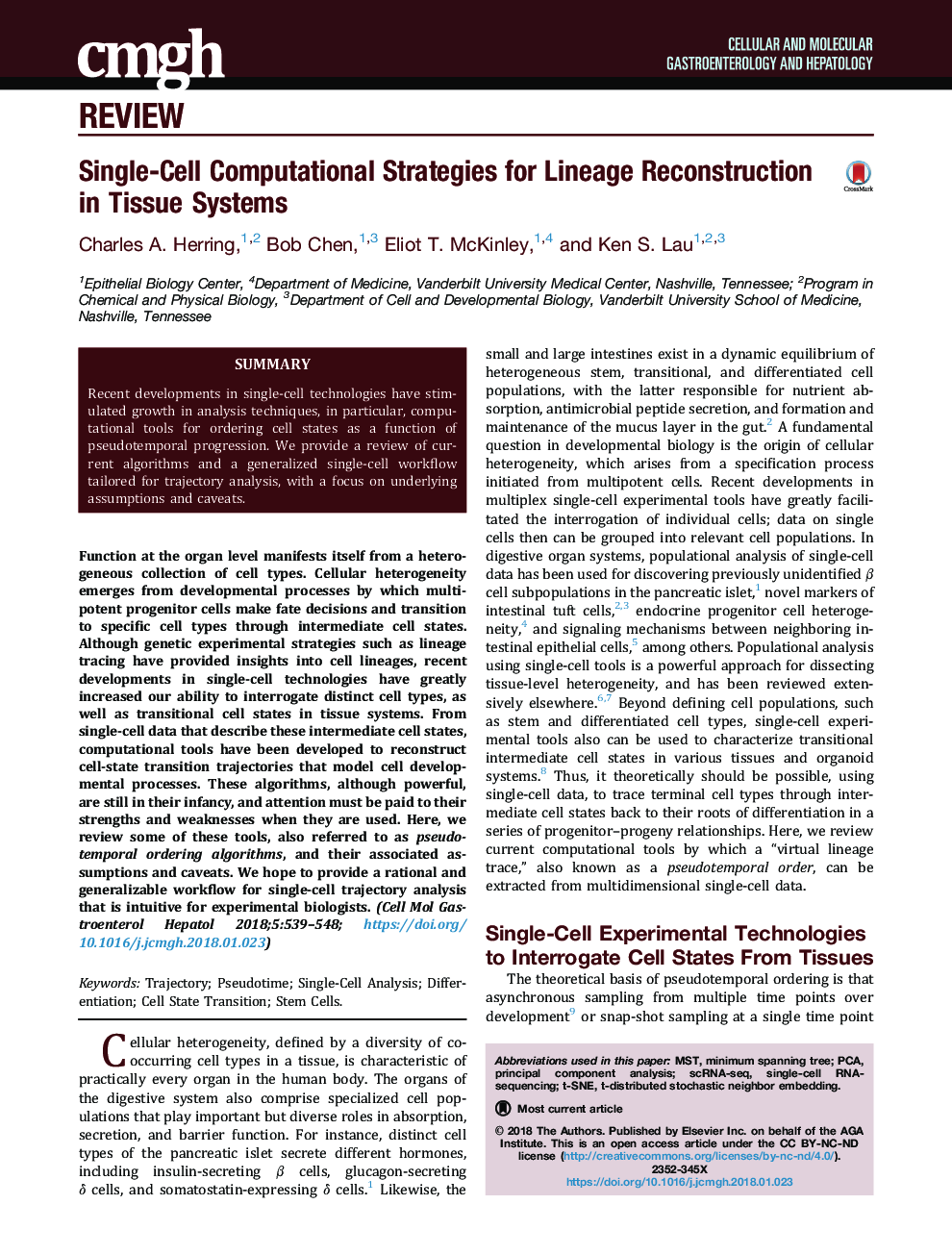| Article ID | Journal | Published Year | Pages | File Type |
|---|---|---|---|---|
| 8376339 | CMGH Cellular and Molecular Gastroenterology and Hepatology | 2018 | 10 Pages |
Abstract
Function at the organ level manifests itself from a heterogeneous collection of cell types. Cellular heterogeneity emerges from developmental processes by which multipotent progenitor cells make fate decisions and transition to specific cell types through intermediate cell states. Although genetic experimental strategies such as lineage tracing have provided insights into cell lineages, recent developments in single-cell technologies have greatly increased our ability to interrogate distinct cell types, as well as transitional cell states in tissue systems. From single-cell data that describe these intermediate cell states, computational tools have been developed to reconstruct cell-state transition trajectories that model cell developmental processes. These algorithms, although powerful, are still in their infancy, and attention must be paid to their strengths and weaknesses when they are used. Here, we review some of these tools, also referred to as pseudotemporal ordering algorithms, and their associated assumptions and caveats. We hope to provide a rational and generalizable workflow for single-cell trajectory analysis that is intuitive for experimental biologists.
Keywords
Related Topics
Life Sciences
Biochemistry, Genetics and Molecular Biology
Biochemistry, Genetics and Molecular Biology (General)
Authors
Charles A. Herring, Bob Chen, Eliot T. McKinley, Ken S. Lau,
